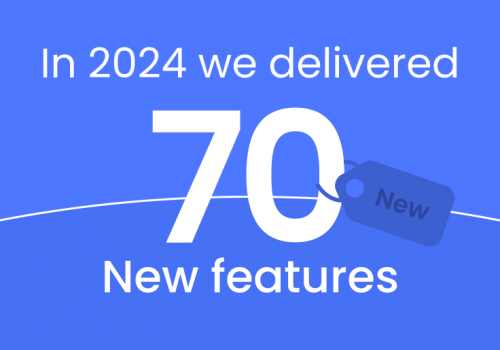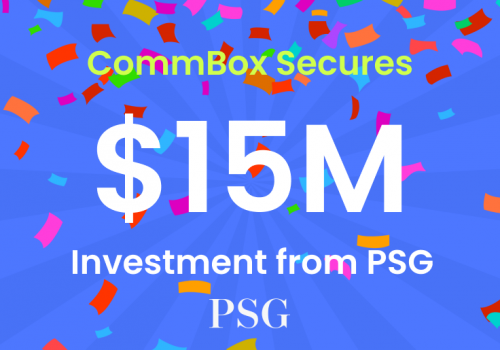Chatbots For Business. Since 2020, especially during the pandemic, chatbots have been gaining popularity not only among large companies such as Okko, Porsche, or Burger King but also among small businesses. But not all small businesses understand how to create an effective chatbot for their niche that will bring in customers and bring them to the sale. Also, there is still a belief among entrepreneurs that to create a chatbot they need to invest a lot of money and hire a programmer. But is it so? Let’s look into it.
How are chatbots useful for business and why are they needed?
A chatbot is a virtual assistant, who undertakes all the routine work, communicates with customers for you, and adds an element of gamification to the dialogue. Chatbots can provide not only service support by answering frequently asked questions, but also help the sales department to increase business revenues.
Despite all the advantages of a chatbot, many people still have fears that customers will not want to communicate with a chatbot and their interest in the company will drop – this is not the case, but rather the opposite. Customers will be much more loyal to the brand if they get answers to their questions in 3 seconds, instead of waiting for an answer from a specialist for several hours. Chatbot can:
- Meet, qualify and segment leads. The chatbot can work 24/7, without breaks or weekends.
- Answer frequently asked questions. When a customer contacts a company, he or she doesn’t want to wait an hour for a manager to be available or a workday to start. He or she wants to get an answer to the question instantly. You can embed a FAQ with answers to popular customer questions into the chatbot.
- Tell the customers about the product and send them useful content. The process of presenting your product/service can be automated. You can send text materials as well as photos with pictures, PDF documents, presentations, and videos.
- Unload managers and automate their work. By automating answers to frequently asked questions, managers can take on more complex tasks that a chatbot can’t handle.
- Bring leads to the sales stage. A chatbot can pass the hot leads to the sales team. It also can remind old customers of you and encourage them to buy again.
Thanks to chatbots, businesses save on call centers, respond faster to customer inquiries and achieve close communication with them.
How to set up an efficient chatbot?
A chatbot will be effective in solving your problems only if it is well designed and developed in advance. But that doesn’t mean your chatbot has to send huge messages to your customers. Don’t overload the user with huge texts: messages should be terse, clear, and specific. If to talk about functionality and concept, the chatbot must:
- Have a clear goal. For example, to meet and qualify a lead for subsequent transfer to a sales or support manager.
- Solve the problem and solve the user’s pain as well as meet the user’s expectations. When a user reaches out to you on messenger, he or she wants a specific and clear answer to the question. If he or she asks what shipping options are available, the chatbot doesn’t need to text him or her about how to pay for the purchase.
- Give value: interesting content or information that answers typical questions. For example, VPN businesses often send clients useful articles on the topic “Free VPN for Netflix”. This topic is very hot right now, so in this way, VPN services attract attention to themselves and give value to customers.
- Allow the client to contact a “live” person for a consultation. Add “Contact Manager” buttons to your messages and respond promptly to such requests.
You don’t have to create only selling chatbots, the main purpose of which is to offer and sell your product in the online store. This strategy will not be justified in all cases. Entertainment chatbots are much more effective now. They can simply talk to the user, conduct polls, send funny pictures and jokes, thereby increasing his or her loyalty and engagement.
What can a chatbot do in different niches and how does it automate communication?
Here are some examples of how you can use a chatbot in your business. Don’t limit yourself to these examples. There can be as many variations of chatbot scenarios as you like. You can use the examples below to find ideas on how to do develop a chatbot in your niche.
Beauty niche
Thanks to the chatbot you can automate the work of beauty salons, barbershops, nail salons, etc. And here are examples of how you can apply the chatbot. Chatbot at beauty niche can:
- Answer frequently asked questions about services and costs.
- Notify customers about promotions and special offers in the salon.
- Send a portfolio of hairdressers’ work.
- Tell about the duration of the procedures provided in the salon.
- Send the price list as a PDF file or an image.
- Send a coupon or a promo code for a discount.
- Book a client for a haircut or manicure.
- Conduct a survey and find out clients` preferences.
Chatbot in a beauty niche is a good way to stay visible all the time. Information about special offers and promotions, useful tips, congratulations, and a loyalty system will contribute to this.
Real estate niche
The real estate market is the most expensive niche in terms of cost per lead. The price per lead can be as high as 300$ or even 500$ depending on the class of property. A chatbot can reduce the cost of a lead by at least 2 times and bring the manager already “hot” and qualified clients. A chatbot in the real estate niche can:
- Qualify potential clients. It can find out what kind of budget the buyer has, whether he or she needs a mortgage or not, what area of the premises he or she expects, filter the needs in the number of rooms, floors, type of house, etc. The winner in the real estate niche is the one who finds out the customer’s needs and “handles” them faster.
- Send a PDF file of the room layout, documents, photos, or presentation of the apartment complex.
- Find out what stops the user from buying a property: not enough budget, not liking the neighborhood, etc. The chatbot can suggest an alternative variant.
- Tell the client about current promotions or favorable financial terms.
The chatbot in the real estate niche is good at segmenting and qualifying potential buyers, finding out their needs and capabilities.
Cafe & restaurant niche
The main pains of the restaurant business are few new customers, regular customers rarely come and there is often low occupancy, especially on weekdays. You will beat your competitors if you have a chatbot that can:
- Show a menu with pictures and prices of the food.
- Give out coupons for a birthday discount.
- Help the client to book a table.
- Tell about the cafe/restaurant and show pictures.
- Tell about the loyalty program.
- Help to make an order and arrange home delivery.
- Ask to leave a review about the quality of service.
Using chatbots, can get up-to-date information, make an appointment for a service, or send a review within seconds. Clients will not have to look for a phone number – communication with the cafe/restaurant will take place without leaving the messenger.
Conclusion
Chatbot in business is first of all a tool for lightning-fast interaction with potential and existing clients. The main reasons for chatbot application are automation of communication, providing all the necessary information about the company, its services, and products as well as the opportunity to leave a request for services or write a review. According to MessageDesk, 67% of people would rather text with a business than talk to them on the phone. People prefer to interact online, that’s why it’s necessary to give them such an opportunity.




















